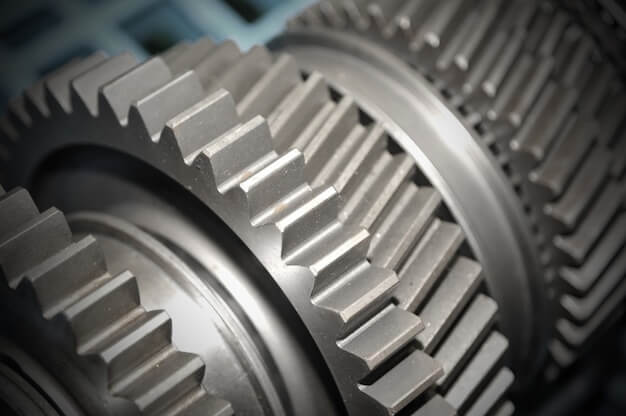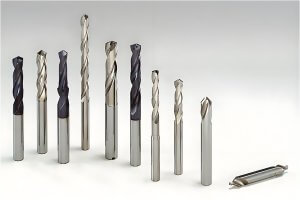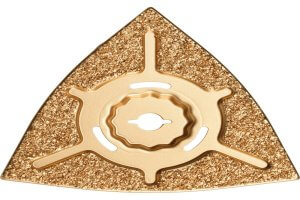The Importance of CNC Machining and the Significance of Surface Finish Process
CNC (Computer Numerical Control) machining plays a pivotal role in today’s manufacturing industry, providing undoubtedly high speed, precision, and automation for the fabrication of diverse metal components. This crucial manufacturing process involves automatically operated tools controlled by computer programming inputs that allow engineers to create detailed 3-Dimensional shapes that are complex and intricate.
The quality of these finished objects greatly depends on an often overlooked aspect, known as ‘surface finish.’ In simple terms, surface finishing is akin to applying the final coat of paint on a sculpture or even like frosting a cake – it enhances not only the aesthetic appeal but also provides functional benefits such as added protection against wear, environmental elements, and corrosion without compromising the exact geometry demanded by design specifications. It could involve polishing, coating, painting, etc., depending upon the texture and toughness needed for the final product.
- Anodized finishes: Mostly used for aluminum parts, they produce a hard, durable surface which can be colored according to the design needs.
- Powder coating: As the name suggests, this method uses a powder that adheres to the component electrostatically before being cured under heat, resulting in strong, resilient layers safeguarding the part inside.
Anodized vs. Powder Coated Finishes
The finishing process known as anodizing involves the use of electrical current to thicken and toughen the natural oxide surface layer of metal parts, enhancing their corrosion resistance, wear-resistance, and ability to hold paint primers or glues. This is primarily achieved by immersing the workpiece in a bath of electrolytic solution and applying an electric charge, producing a durable, uniform finish that does not chip or peel. Given its impact on the longevity and aesthetic appeal of machined components, the role of anodizing cannot be underestimated within the CNC machining industry.
- Basic Definition and Purpose of Anodizing: As mentioned, anodizing essentially fortifies the oxidized outermost layer of a metal component such that it’s more resilient against corrosion and abrasion while also creating an ideal surface for secondary processes like painting or bonding.
- Process of Anodizing: The typical process entails first cleaning and preparing the part before submerging it in an electrolytic solution, often acidic. Electricity is then applied, triggering a reaction that forms a hard, protective oxide layer.
- The Role of Anodizing within the CNC Machining Industry: Beyond adding resilience and extending the lifespan of the machined components, anodizing brings about functional benefits such as increased adhesion for paint primers/glues and improved lubrication. Moreover, this finish offers options for color dyeing if aesthetics are of importance.
Comparison: Anodized vs. Powder Coated Finishes
- Anodized finishes offer enhanced durability, corrosion resistance, and improved visual appeal for CNC machined parts.
- Powder coated finishes provide excellent durability, wear resistance, and a wide range of color options for achieving desired aesthetics.
Comparison: Anodized vs. Powder Coated Finishes
In comparing anodized and powder coated finishes within the realm of CNC machining, several factors come under consideration. The durability of a finish is paramount; anodized finishes are noted for their hardness and corrosion resistance making them suitable for parts exposed to extreme conditions. Conversely, powder coated finishes exemplify robustness against chipping, scratching, and fading, thus utilized more frequently on products with high-traffic use.
The esthetics also offer contrasts: while anodizing lends a metallic sheen, suitable for tech-heavy or modern designs, powder coating offers countless color options and textures, synonymous with customization. Cost-wise, anodization requires less material and energy than powder coating, thereby often proving to be the economical choice.
- Example scenario one: A company manufacturing outdoor equipment may choose anodized finishes for their long-lasting protective qualities when exposed to environmental factors such as rain and sunshine.
- Example scenario two: A business producing children’s toys would opt for powder-coated finishes, appreciating its resilience to wear-and-tear and vibrant color varieties, key aspects influencing familial purchases.
The Applications of Anodized and Powder Coated Finishes in Daily Life and Industrial Products
Both anodized and powder coated finishes have diverse applications ranging from daily life commodities to complex industrial products. An anodized finish, notable for its durability and corrosion resistance, is commonly applied on items such as kitchen utensils, laptops, smartphones, or jewelry. It provides these items with heightened aesthetics and improved lifespan, making them both appealing and functional.
- Anodized Finish: Used in automotive parts, window frames, roofing systems, aircraft components, military-grade equipment, and more, the anodizing process adds a layer of oxidation to metal objects which enhances their wear resistance and strength.
- Powder Coated Finish: On the other hand, we often see the use of powder coated finishes on household appliances, automobiles, outdoor furniture, and architectural hardware among others. Not only does this process add color to a product but it also fortifies it against adverse environmental conditions like UV rays and harsh weather elements. This type of finish stands out for its eco-friendliness because it contains no solvents and releases negligible VOCs (volatile organic compounds).
Conclusion: Appreciating the Critical Role of Surface Finishes in CNC Machining
In our exploration of surface finishes in CNC machining, we have delved into both anodized and powder-coated finishes. Both processes play vital roles in obtaining durability, aesthetic appeal, and improved functionality in final products. Anodized surfaces offer superior corrosion resistance and a hard exterior; conversely, powder coating promises superior coverage and a wide variety of color options. The in-depth understanding gained permits an enhanced appreciation for intricate manufacturing processes seen in everyday objects.
The following summarizes the main attributes of each surface finish:
- Anodizing delivers top-line protection against wear and tear, rendering it ideal for high-stress components. However, its color palette can be limited compared to other finishing techniques.
- Powder coating has wider color selections and ensures uniform coverage across irregular shapes. But its protective capabilities are inferior as compared to anodizing.
This close examination explores the profound role these technical principles play in creating reliable, durable, and visually appealing products that touch every aspect of modern life.
Pain Points with Different CNC Machining Finishes
Before diving into the detailed comparison of anodized versus powder-coated finishes in CNC machining, users may often encounter a few challenges and concerns relating to their performance and application. Such discomforts include but are not limited to deciding which finish offers the best durability, as well as deciphering how differing surface finishes might affect the final product’s aesthetics or quality control standards.
- An essential yet confusing aspect is discerning between suitable matte and glossy finishes. This choice can be pivotal as it influences aspects such as color retention, resistance against conditions including abrasion, corrosion, fading, or even whether the component will meet necessary safety compliances.
- Economic factors also play a huge role; users have pain points over which type of finish would give them the utmost value while balancing cost-effectiveness. Associated costs like sourcing materials for either finish, energy usage during the production process, and considering if any additional post-processing operations are required further compound these difficulties.
- Another confusion tends to revolve around appropriate use cases and considerations of environmental impact for each finish. Both choices present varied ecological footprints influenced by waste disposal methods, material recyclability, and overall sustainability insinuations.
All these issues underline why this article analyzes the technical principles underlying both finishes’ distinction rather than referring directly to specific products or machines.
Other Articles You Might Enjoy
- The Ultimate Guide to Metal Surface Finishes
Part production requires metal surface finishing. Quality metal surface finishing will make any part look better, no matter how well it is finished. There are many types of metals. Welder…
- Surface Finishes Options For Custom Metal Parts
Although the tool marks on metal parts made using CNC machining services can be visually appealing, there may be cases where additional processing is required. You have many options to…
- The Role of Surface Finishes in CNC Machining: Anodized Aluminum vs. Stainless Steel
The Role of Surface Finishes in CNC Machining: Anodized Aluminum vs. Stainless Steel CNC machining, standing for Computer Numerical Control, represents a prevalent technology used in the manufacturing sector where…






